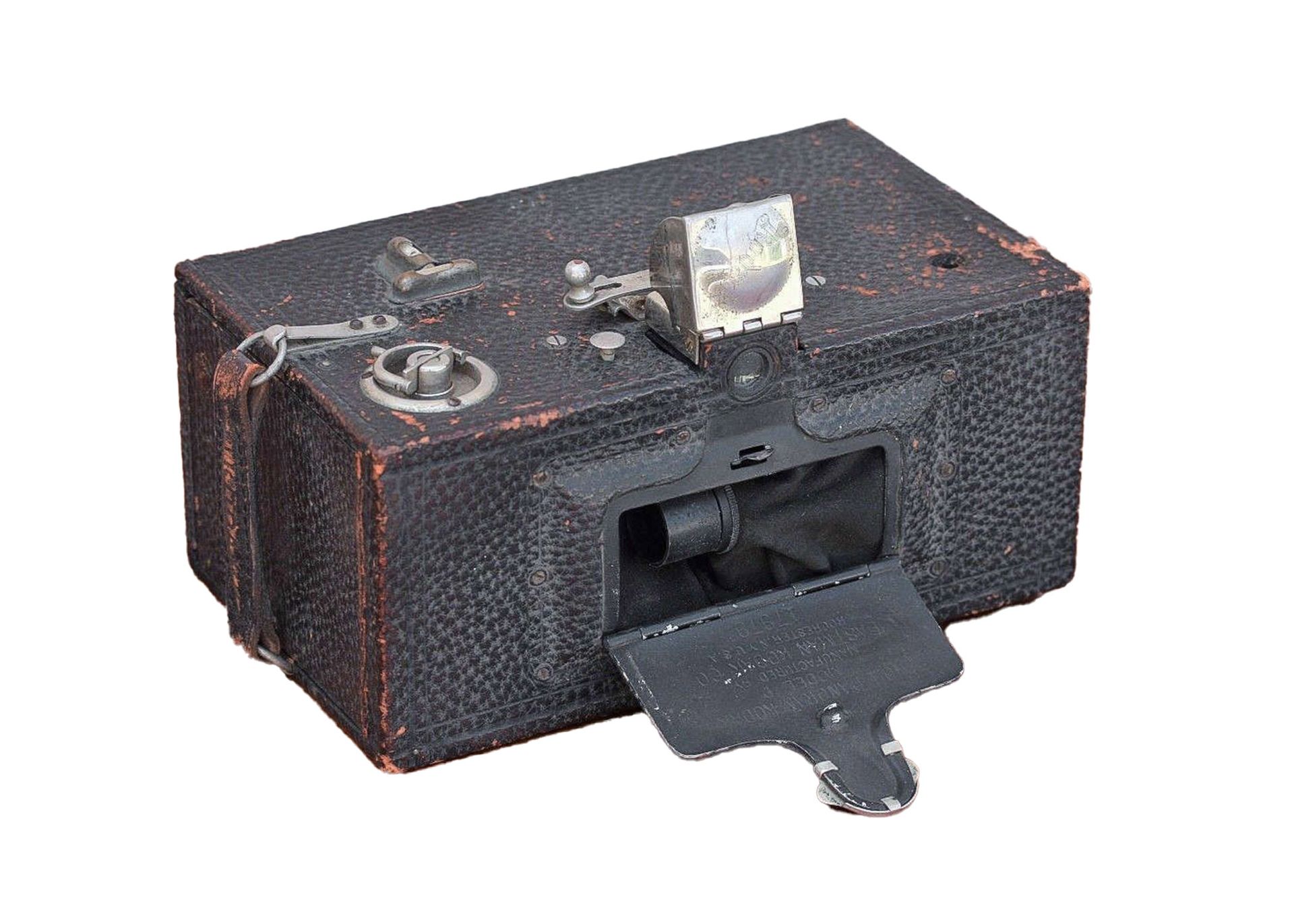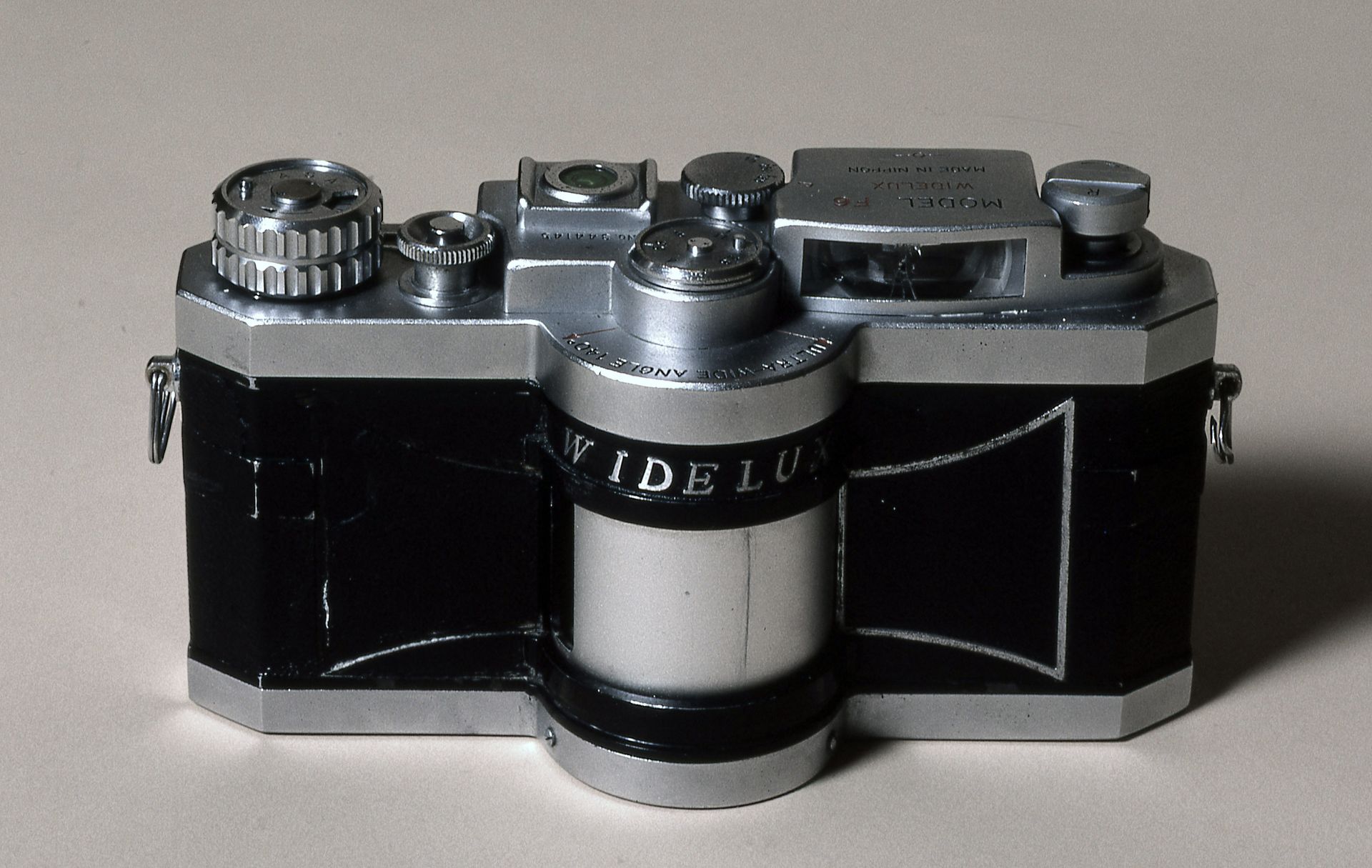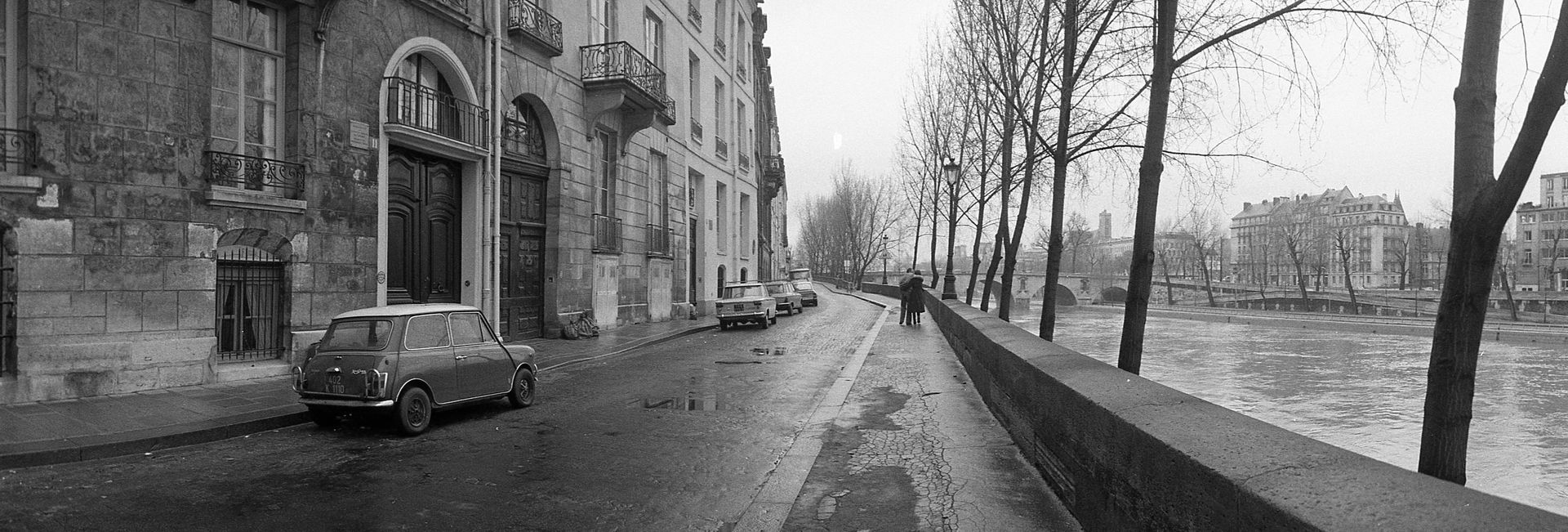Panoramic Cameras and Photographs

One problem that has faced photographers since they began capturing images is that humans can move their heads from side to side thus being able to see a wider panoramic view; photographs are usually limited to looking straight ahead. The answer to this challenge became panoramic cameras with swivel lenses that are able to take in views of up to 140 degrees, 180 degrees, or more.
I was reminded of my experiences with panoramic cameras recently when actor Jeff Bridges demonstrated his Widelux on the Stephen Colbert Show. I’ve made a lot of wonderful photos with my Widelux camera through the years.
Starting in the 19th century, several camera manufacturers made swing lens cameras in various formats. The most extreme was the Cirkut cameras. Cirkut cameras swiveled on a track while the film moved in the opposite direction during the exposure. The most common Cirkut camera made a negative 8 x 36 inches which was then contact printed onto roll paper. There are a surprising number of these photographs still around, usually of military units, large meetings, or reunions. I restore on average about one of these per month, so I know thousands of these large prints were made. Antique dealers call them “Yard Longs” because of the size.
A more modern version of the Cirkut camera is the Widelux made in Japan by Panon starting in 1958. The first one I owned was an F7 Model. It had mechanical issues because it was a complicated mechanical camera made in small numbers by a small company. I then bought a new Widelux F8 which I used to make hundreds of images with on our travels. I have many Widelux photos of Paris that I made on a trip there in 1983.
The Widelux uses 35mm film, but the format is 24x54 mm compared to the standard 24x36 35mm format. The much wider negative means the negatives must be printed by a specialty photo lab. My business, Mathis Photo Inc, was a specialty lab at the time, so I was able to create my own Widelux negative carriers to do the prints myself.
I sold the Widelux when I switched to digital in 2001 and was able to emulate the perspective of a panoramic camera by taking multiple images from different angles and stitching them together in Photoshop. I had a Nikon 8400 EVF camera that made this easier by showing the previous shot in the viewfinder to line up multiple exposures.
Sony was the first to come out with a camera that allowed multiple images to be stitched together in the camera allowing for true “In Camera” panoramics like we used to do with the Cirkut and Widelux cameras. Now most smartphones have a panoramic feature built in that seems to work fine, except for the obvious ergonomics of having to move the camera in a specific direction at a specific speed. It takes a little practice, but it is worth it!
I still make a lot of panoramic photographs, but I usually just make multiple images, (to the left, straight ahead, and to the right,) and then stich them together in Photoshop. This technique gives the most control.
If someone wants to try their hand at making panoramic photos, the quickest way is just to find the “Pano” setting on their phone and then following the onscreen directions. The old-time Cirkut camera photographers would be envious. To make true Yard Long prints, it will take some more gear, but it is possible. Give me a call when you are ready to make your 8x36 inch or larger prints.


Image made with a Cirkut camera

Photo made with a Widelux in Paris in 1983

London made with three photos stitched together with Adobe Photoshop

Vietnam Memorial in Washington DC made with the "panoramic" setting with a smartphone.